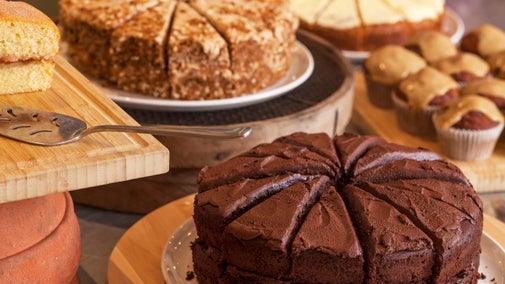
Discover more at Bodiam Castle
Find out when Bodiam Castle is open, how to get here, the things to see and do and more.

With its huge towers and wide moat, Bodiam Castle looks like a classic ‘bucket and spade’ castle. But for the man who built it, Sir Edward Dallingridge, the castle was a secure home, designed to impress. As an experienced soldier and warrior knight who had fought in France, he was well aware of the threat of invasion and revolt. The medieval ruins of his castle are a great place to explore and imagine yourself back in the past, defending the castle from enemies or feasting in the great hall.
Once inside the castle's ruined walls there's lots to see and do. You could climb the steep spiral staircases to the top of the towers, take a seat on the dais and observe the great hall or look up at the remains of the iron-clad oak portcullis, thought to be one of the oldest in England.
This was partly a defensive feature and partly designed to impress, with the castle reflected in the water. The approach to the castle was different in Sir Edward’s time. They would have arrived from the west over an L-shaped bridge. The timber from the medieval bridge survives at the bottom of the moat.
On a rectangular island north of the castle entrance are the remains of the Barbican, a fortified outbuilding that protected the main gatehouse. This two-storey building could have been occupied by guards and had its own portcullis.
Before entering the castle, look up to spot the coats of arms and a helmet with a unicorn. The unicorn was Sir Edward’s crest, and he wore a helmet like this when he went into battle. The thick walls give the impression of being impenetrable, and the parapet above the entrance could have concealed archers. For added defence there are gun loops for hand-held canons. There were originally three portcullis gates, with the outermost gate still remaining.
In the vaulted ceiling are ring-bosses (or ‘murder holes’) through which missiles could be dropped on attackers.

The whole household would have eaten here at communal meals. Guests sat at benches with tables set length-ways down the hall, and the Dallingridges sat on a stepped dais facing the room. Often owners would retreat to their chambers to eat, and only dine with the others on special occasions.
The ruined walls were once neat fronts of stone-built rooms. The surviving windows and fireplaces offer clues as to how the buildings surrounding the courtyard were arranged, and where each floor was situated. Just off the central courtyard is the Screens Passage which divided the castle between the service end and the main rooms.
This was reached through the central arches of the Screens Passage. You’ll see a huge roasting hearth in the south wall and a second hearth in the north, inset with bread or pastry ovens.
The high end of the Hall lead to the main private apartments. Built with comfort in mind, they are set across two floors. East-facing windows captured the morning light and fireplaces provided added warmth.
This room was once decorated with coloured Flemish tiles and divided by a fine screen carved in chalk. There was a space above the chapel, called an oratory, where Sir Edward and Lady Elizabeth would sit, believing that the higher they were the closer they were to God.

Steps lead down from the kitchen into the south-west tower to a pool. It was probably fed by a spring and likely to have started out as a well. It is difficult to be sure as the area has likely been adapted over the years. On the upper levels was accommodation for a kitchen steward and a dovecote with nesting boxes.
This was a secondary entrance and may have been used for delivering goods via a drawbridge. It also once had a portcullis. If you would like to climb the postern tower we recommend wearing flat, sturdy shoes as the spiral staircase is steep with narrow treads and a steep rise. It is not suitable for those of limited mobility or with small children.
Bodiam Castle is home to one of the most important bat roosts in the UK. Some areas of the castle may be closed at times of year when the bats are most active, such as when bat pups are born and are learning to fly.

Find out when Bodiam Castle is open, how to get here, the things to see and do and more.

Discover the history of Bodiam Castle. Find out who built it, its royal connections and what historic graffiti can tell us about the castle’s past.

Enjoy food and drink with a view at Bodiam Castle. Shop for gifts or a souvenir of your visit and browse for the perfect pre-loved book.

Discover what to see and do in the grounds of Bodiam Castle. Take a riverside walk, stop for a picnic or look for wildlife – from rare bees to bats.